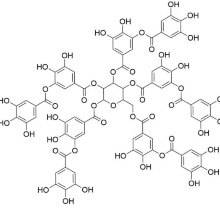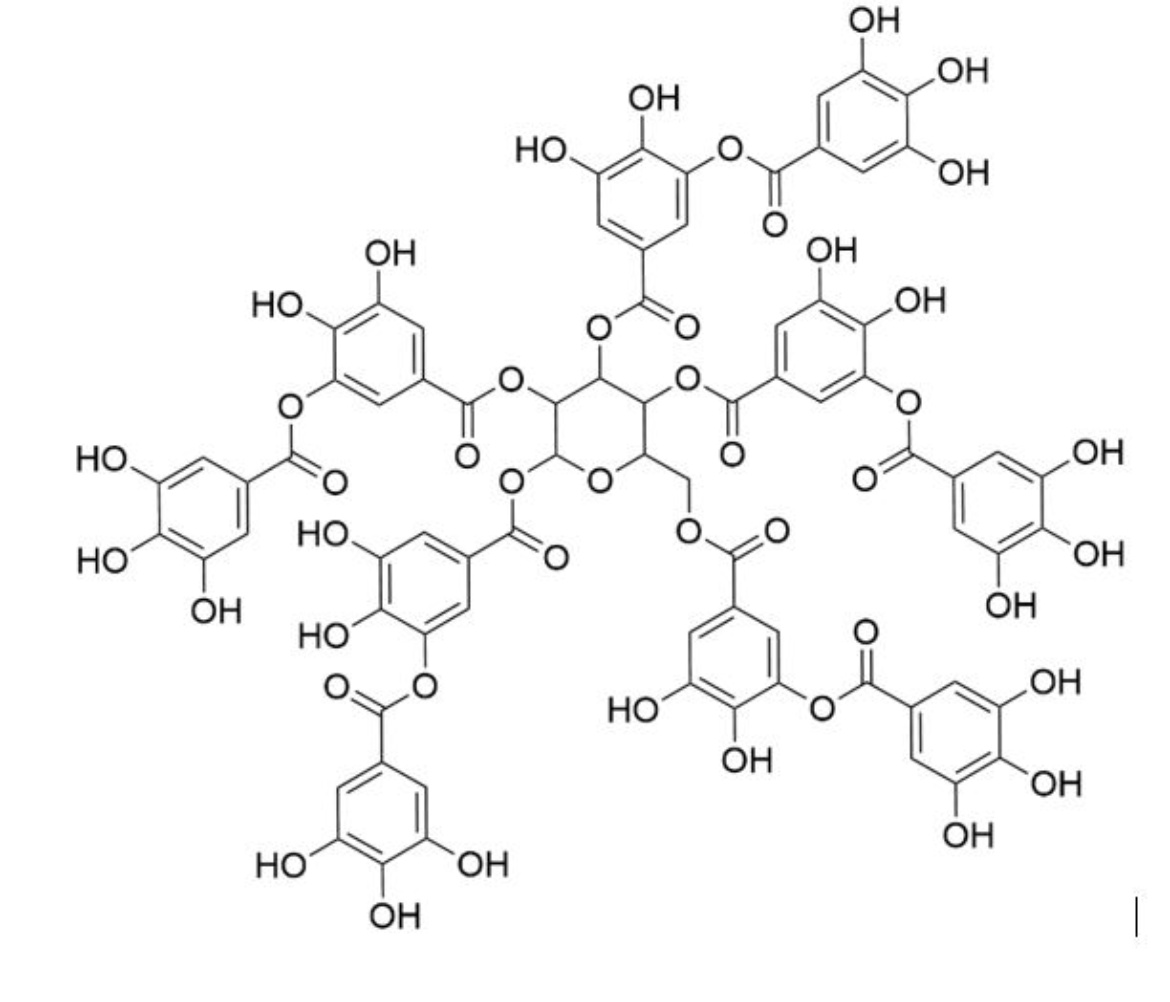Tannins are phenolic compounds that can be classified into two major classes – condensed tannins and hydrolyzable tannins [1]. Condensed tannin (CT) is the most abundant tannin extracted from wood. The best-known hydrolyzable tannin is tannic acid (TA) which consists of five digalloyl ester groups covalently attached to a central glucose core (Figure 1).
Besides covalent bonding, TA and CT can non-covalently interact with other molecules through hydrogen bonding, hydrophobic and electrostatic interactions, and π-π stacking. Moreover, the galloyl functional groups of TA provide multitopic chelating sites that can coordinate a range of transition metals [2].
In 2021 and 2022, a total of 83 and 78.7 million cubic meters of timber were logged in Germany [3]. Despite its abundance, bark is often deemed as waste in the wood industry and is commonly utilized as hog fuel. In response to the substantial amount of industrial bark residue generated in Germany, as well as worldwide, this project focuses on production of tannin-based hydrogel foams and solid foams. This emphasizes the role of tree bark and its extracts as a fundamental element in material production rather than as a waste product. The project employs environmentally friendly methods, utilizing water and plant-based biomolecules, and explores a novel application of tannin-based metal‑phenolic networks (MPNs) as a foam material [2]. Microfluidic foaming is employed to achieve precise control over the structure of the templating liquid foam, i.e. to create monodisperse foams with highly ordered bubbles [4]. Hydrogel foam is formed by crosslinking the liquid foam template with transition metal ions such as titanium or iron. To tune its properties, rheology is implemented. Tannin-based solid foams are obtained by a subsequent drying of the hydrogel foams.
| [1] Das, A. K.; Islam, Md. N.; Faruk, Md. O.; Ashaduzzaman, Md.; Dungani, R. Review on Tannins: Extraction Processes, Applications and Possibilities. South African Journal of Botany 2020, 135, 58–70. |
| [2] Rahim, Md. A.; Björnmalm, M.; Suma, T.; Faria, M.; Ju, Y.; Kempe, K.; Müllner, M.; Ejima, H.; Stickland, A. D.; Caruso, F. Metal-Phenolic Supramolecular Gelation. Angew.Chem. 2016, 128 (44), 14007–14011. |
| [3] Forestry and Wood. Federal Statistical Office, 2023. |
| [4] Andrieux, S.; Quell, A.; Stubenrauch, C.; Drenckhan, W. Liquid Foam Templating – A Route to Tailor-Made Polymer Foams. Advances in Colloid and Interface Science 2018, 276–290. |

Justyna Piotrowska
PhD Student

Cosima Stubenrauch
Prof. Dr.Dean of Faculty
- Profile page
- +49 711 685 64470
- Write e-mail
- Secretary: Room 9-302; Tel. +49 711 685-64451 and -64393; sekretariat2@ipc.uni-stuttgart.de



